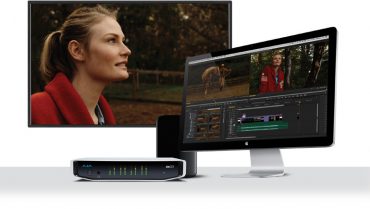Building a home for your UHD content
Adopting UHD means an opportunity to rethink storage. Andy Warman, Harmonic’s director of production and playout strategy, gives tips on building a storage solution for handling UHD
UHD is effectively four times the size of HD (1080p), and that means that significantly greater capacity is necessary to store UHD media files. While more storage capacity is a clear requirement, the shift into UHD editing and production also demands an increase in bandwidth and therefore faster connections to enable the same level of interactive performance for timeline editing, fast file movement and media processing on and off a storage system.
Although capacity and bandwidth requirements are transforming performance requirements needed with the move to UHD, the workflow they support is remaining relatively unchanged. The use of HDR (High Dynamic Range) and the ability to add more immersive audio can add to the workflow, but for the most part there is little or no action being taken to change editing and production workflows, and so the transition to UHD isn’t really changing the way that storage gets used by those processes.
In some cases, facilities that create content for television have started working in UHD for shooting and post production even though they distribute the final product in a lower resolution. Although there are still a limited number of UHD services available today, this approach enables the facility to improve the quality of its HD outputs while ensuring that higher-resolution content ultimately will be valuable as a UHD deliverable, when the market for it is right.
Compression choices
As facilities begin working with UHD, they have an array of new codecs, as well as older well-known options, from which to choose. The specific codecs they embrace will have a direct impact on the capacity and bandwidth required of the storage platform. With UHD file sizes being so large, the differing requirements of these codecs is an important consideration – higher bandwidth requirements add up fast. In many cases, a facility will settle on a mezzanine compression format (lightly compressed) that is visually indistinguishable from the original uncompressed version.
Another consideration in UHD adoption is how and where to store UHD assets. Should the content be integrated with other assets on existing storage? Or, should they be stored on a dedicated new system. Either way, the ability to expand in both capacity and bandwidth as UHD becomes a greater part of the overall workflow is an important factor to consider when deciding on a storage solution. The latter approach is made possible when using storage technologies that offer non-disruptive scaling of storage. Bandwidth and storage capacity can be added while the system is still in use with no interruption to service and no down time for users. As workflow requirements evolve, this approach creates efficiency and an easy way to provide the right new resources in the right place at the right time.
Getting disks to shine
To be cost-effective, the UHD storage solution is most likely to be built on hard-drive technology. To get the required level of performance means more disks and faster connectivity than for HD assets. It is beneficial to have a greater number of drives per rack unit along with higher speed connectivity. This helps reduce space requirements, complexity of installation and can somewhat mitigate maintenance and power consumption. UHD storage solutions will depend on 10GbE or other high-speed connections. As editing clients and workstations are upgraded to support UHD, it is important that the right connectivity technology link those workstations to storage.
Where storage for UHD content can really shine is in how consistently it provides direct access to files, regardless of how much storage capacity is in use. This is a performance characteristic that makes a high quality shared storage system an ideal solution for UHD production workflows. Providing the performance of a Fibre Channel Storage Area Network (SAN) and the simplicity and scalability of Ethernet-based Network Attached Storage (NAS), such a system can ensure the user experience is always the same no matter how large the system grows, or how much storage capacity is consumed. Even when numerous editors are working on exceptionally large UHD files simultaneously, the load on the system does not translate to slowdowns. Likewise, because there is no down time for scaling or drive rebuilds, editors and other processes like file transfer and transcoding enjoy continuous performance.
Many broadcasters are considering also how their investment might boost other areas of content production and delivery. Storage technologies have evolved to support a wide array of applications, including the creation of digital libraries and the consolidation of “islands” of storage onto a single storage platform.
As with every other major migration from one format to another, the move toward UHD will demand efficient, cost-effective storage. The demands for delivering content for multiplatform delivery as well as for UHD means new or expanded storage systems are now being required to support conventional linear broadcast workflows, new UHD/4K workflows, and the workflows supporting delivery of content to OTT and VOD services, as well as to CDNs.










Comments
No comment yet.